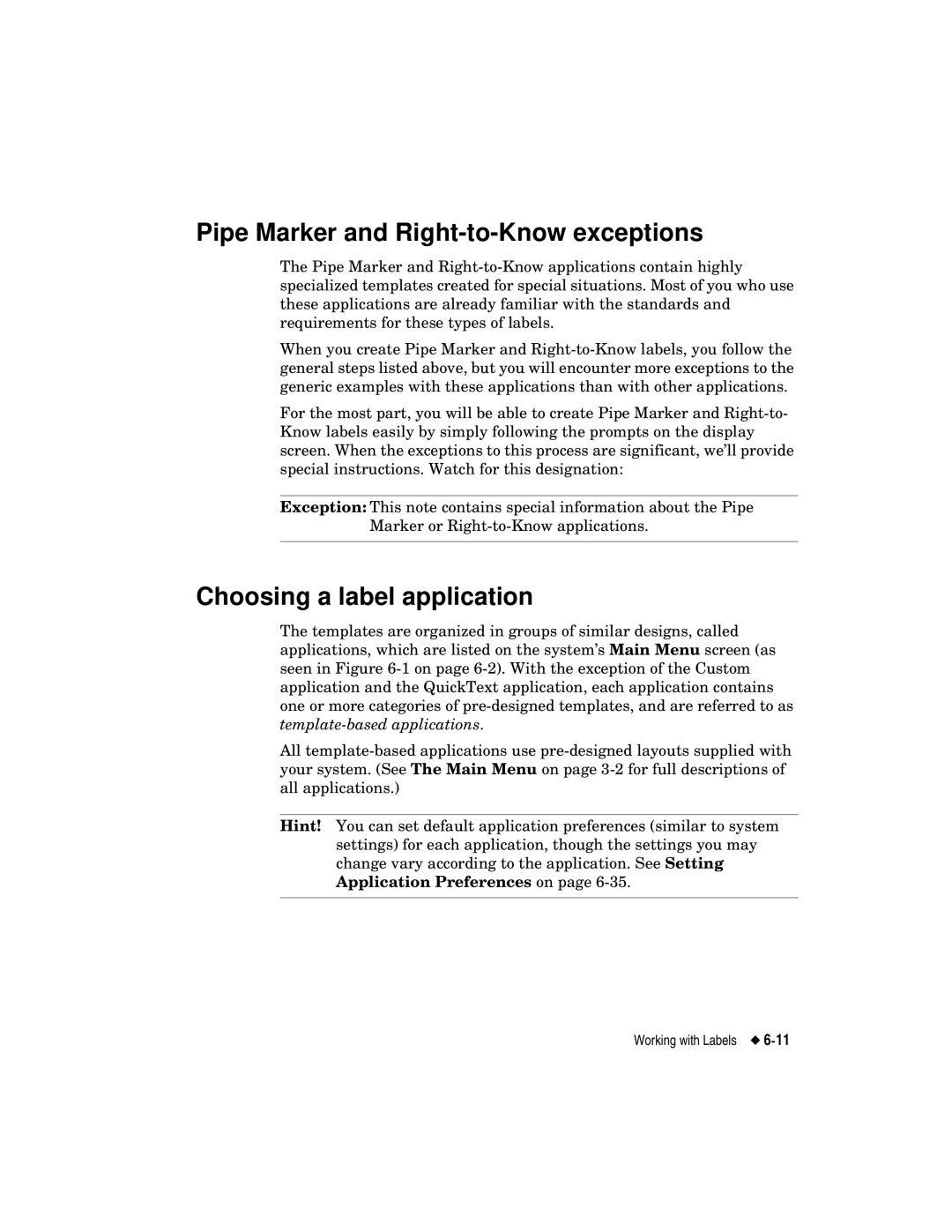
Pipe Marker and Right-to-Know exceptions
The Pipe Marker and
When you create Pipe Marker and
For the most part, you will be able to create Pipe Marker and
Exception: This note contains special information about the Pipe Marker or
Choosing a label application
The templates are organized in groups of similar designs, called applications, which are listed on the system’s Main Menu screen (as seen in Figure
All
Hint! You can set default application preferences (similar to system settings) for each application, though the settings you may change vary according to the application. See Setting Application Preferences on page
Working with Labels
